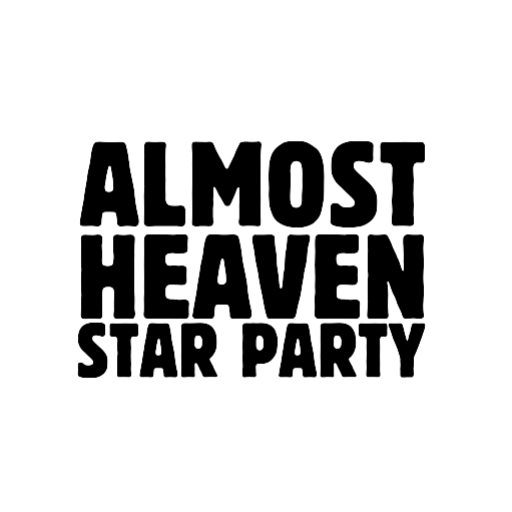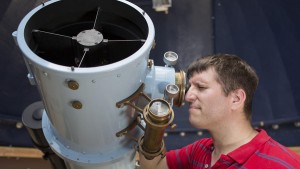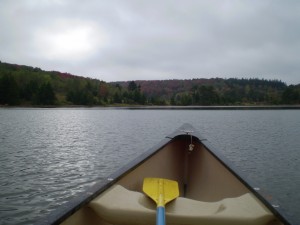Updated on August 9, 2015.
Click here to see a schedule of the events of the weekend.
National Radio Astronomy Observatory
NRAO: Behind-the-scenes Tour
Saturday , August 15, 2015 – Meet on outdoor deck at 10:30 to form carpools for noon start at NRAO/Green Bank.
The tour will be a “behind-the-scenes” tour, so participants will get to visit labs and the telescope control room —locations that are normally off-limits to the public!
Hands-on Radio Astronomy
Saturday, August 15, 2015 overnight
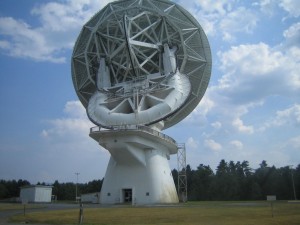 National Radio Astronomy Observatory
National Radio Astronomy Observatory
We have arranged for access to NRAO’s 40-foot educational dish on this evening. Participants will stay overnight at NRAO and return the next morning. No prior radio-astronomy experience is required; NRAO will provide instruction and support. Space is very limited!
If you’re going on the Behind-the-Scenes Tour, you’ll simply stay at NRAO following the conclusion of the tour. Otherwise, you should plan to be on-site at NRAO by 4:15 p.m.
If you will be observing using NRAO’s 40-foot educational dish, you may wish to look over the observing manual before you arrive at AHSP. Here is a pdf copy of The 40-Foot Observer’s Manual.
IMPORTANT NOTE: Cameras are welcome at NRAO. In order to prevent radio-frequency interference to observations in progress, the observatory prohibits the use of digital cameras (and electronics-laden film cameras) in some locations close to the telescopes. Bring a simple film camera if you’d like to get some pictures up close to the instruments.
Mountain Railroad
‘Durbin Rocket’ Run
Updated July 16, 2015
– Train departs Durbin Depot on Sunday at 10:00; meet on outdoor deck at 8:30 am for carpools.
Based on the positive response to previous outings on the Cass Scenic Railroad, we have added a field trip to the ‘Durbin Rocket’ as a daylight activity. AHSP will have group-rate tickets for the 2 hour round trip along the Greenbrier River, which recreates part of the rail transportation and logging tradition of the area. Definitely a family activity, for any weather. We will provide snacks for our group. Lunch will be on your own, either at the lunchroom near the Durbin station, or somewhere else of you choosing (suggestions to be provided). TMI has been asked to hold over a late lunch for those on the meal plan. 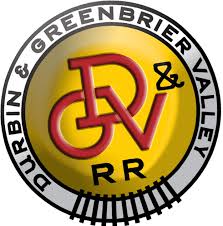
Tickets for the train ride, the historical sites, and snacks will be $26 for adults and $18 for children 5 – 12 years old. We are not limited in the group size. Reservations can be accepted through July 31. Durbin is about 50 min. south of TMI, before NRAO. Those staying overnight at NRAO should be able to join us at Durbin, if they wish.
The Durbin Rocket is pulled by a geared-drive engine, but of a different design than those at Cass. The trip is leisurely run along a river valley that passes south from Durbin to the west of NRAO. The train includes open and closed cars and a caboose.
Separately: Those who want more railroading can continue down the road to Cass on your own, at your convenience. In the past, volunteer restorers showed us and discussed their work restoring and maintaining the Cass locomotives. It was a highlight of the day. The restorers may be working with the shops this weekend. We will update here when we find out whether this will be a weekend with active train renovations in progress at the Cass maintenance shops. Right now, it is a 50:50 chance.
Bob Bunge wrote in 2010: “Cass is unique and very much a treasure of mountain history and culture (much like TMI). It has the largest operating fleet of geared locomotives in the US. One of their locomotives, Western Maryland #6 is the largest Shay type locomotive ever made.
“The trip up the mountain features steep, steep grades; at some points, there are “switch backs” where the train will stop, backup and move forward again since there either isn’t room or the grades would be too steep even for the geared locomotives. The engines work very hard up the mountain, if you are into anything industrial and enjoy sound, the combination of the different noises, the roar of the exhaust, the steam whistle and screech of the wheels is a real treat.”
Volunteer carpools will meet on the deck after early breakfast.
We will add more information here about railroading near AHSP.
Events and Speakers
Michael and Carrie Kline, Talking Across the Lines
Friday, August 14, 2015, 4:00 pm in the Yurt
Appalachian songs and stories
Summary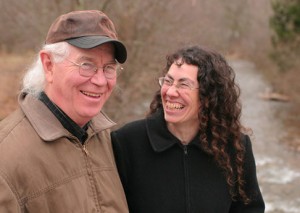
A program of WV music and folklore. We perform this regional music regularly, a mix of traditional music, songs of the great outdoors, and coal mining songs, with bridging narratives connecting audience members with local history and culture. We have been working in the field of WV music and folklore for 40 years and live in Elkins. See and hear more at http://folktalk.org/wc.html.
Biography
Michael and Carrie Kline weave West Virginia stories and folklore with spine tingling harmonies on voice and guitar. They live and breathe Appalachian music and culture. Their voices carry the songs with truth and authenticity. The Klines present their music both as entertainment and social history, with engaging ease and hard-hitting passion. They have spent years recording music and spoken narratives from Cherokee, North Carolina throughout the southern coalfields and mountainside farms of Kentucky and West Virginia into Pennsylvania’s anthracite country. They have documented southern mountain experience and music in industrial cities from Cincinnati to New England.
The Klines’ high mountain harmonies meld with their intertwining bass lines on two guitars, with Michael’s melodic flat-picking and Carrie’s rhythmic backup. They have performed in Italy, Germany, and across the United States in living rooms, and concert halls, prisons to picket lines from Maine to Ohio, New York City and Washington, D.C., Wisconsin and California. To hear them and be encouraged to join in on a chorus is to be transported to a country church, a primeval forest, a coal miner’s picket line, or grandma’s kitchen. From songs such as Walk with Granny One More Time, to The Coal Tattoo, all of them wrapped in a patchwork quilt of vivid images, the Klines evoke emotions that touch the soul. Kitchen songs. When they sing, you can smell the biscuits baking. The Klines’ CDs featuring regional history, music and folklife are generally on hand, including two new releases of their duet singing, “Working Shoes” and “Wild Hog in the Woods.”
Rob Naeye
Friday August 14, 2015 6:30 PM in the Yurt
The Hubble Space Telescope’s Greatest Scientific Achievements
Summary
Ask anyone on the street to name a telescope, and odds are good he or she w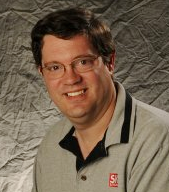 ill reply, “the Hubble Space Telescope.” Hubble has gained worldwide fame for its spectacular pictures, which grace T-shirts, posters, and postage stamps. But Hubble is much more than just an instrument for taking pretty pictures. Since its launch in 1990, this great space observatory has been one of the most powerful science machines ever built. Hubble has contributed major discoveries to almost every field of astronomy, from planetary science to cosmology. Join former Sky & Telescope Editor in Chief Robert Naeye as he describes Hubble’s most profound contributions to human understanding of our wondrous universe.
ill reply, “the Hubble Space Telescope.” Hubble has gained worldwide fame for its spectacular pictures, which grace T-shirts, posters, and postage stamps. But Hubble is much more than just an instrument for taking pretty pictures. Since its launch in 1990, this great space observatory has been one of the most powerful science machines ever built. Hubble has contributed major discoveries to almost every field of astronomy, from planetary science to cosmology. Join former Sky & Telescope Editor in Chief Robert Naeye as he describes Hubble’s most profound contributions to human understanding of our wondrous universe.
Biography
TBS
Dr. George Doschek, Research Physicist & former Branch Chief, Space Science Div., Naval Research Laboratory and NOVAC member
Saturday August 15, 2015 10:00 AM in the Yurt
The Atmosphere of the Sun: what is it and how do we study it?
Summary
I will explain how we observe the Sun’s atmosphere, especially stressing spectroscopy, and describe the atmosphere’s structure and some of the ideas that explain how it is heated and maintained. The presentation will be based mainly on the programs I have worked on. I will start with what an O III filter does (and explain what O III means) and then expand the ideas of visual observing to what we learn by observing the ultraviolet (UV), extreme ultraviolet (EUV), and X-ray wavelengths. For flares I will describe some of my EUV spectroscopy work and what I’m trying to learn from it.
Biography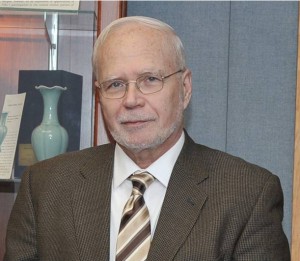
Dr. George Doschek, a Research Physicist in the Solar and Heliospheric Physics Branch at the U.S. Naval Research Laboratory (NRL), has been honored with the 2015 George Ellery Hale Prize in solar physics. The prestigious Hale Prize, named in memory of astronomer George Ellery Hale, is awarded by the American Astronomical Society Solar Physics Division (AAS/SPD) for outstanding contributions over an extended period of time to the field of solar astronomy.
Doschek is recognized “for his pioneering work in solar spectroscopy, in particular his important insights into the interpretation and analysis of solar spectral observations, and his leadership as U.S. principal investigator of the Yohkoh Bragg Crystal Spectrometer and Hinode Extreme Ultraviolet Imaging Spectrometer.” – See more of the NRL release
George has been with NRL since 1968. His research areas are solar physics, atomic physics, and solar physics spectroscopic space instrumentation. He has analyzed data from many astrophysical space missions and has been a key player in the design and construction of new solar space experiments.
Elizabeth Warner, University of Maryland
Saturday August 15, 2015 1:30 PM in the Yurt
Using the ADVS for Asteroid Occultations
Summary
The UMD Observatory acquired an Advanced Digital Video System (ADVS) for use by students in observing asteroid occultations. We are still learning the system but do have one positive and several successful misses under our belt. I’ll go over the system, how we determine when to observe, and the observing process we use
Biography
Prior to coming to UMD in Fall 2000, Elizabeth worked at the University of South Carolina Melton Memorial Observatory as an undergrad TA, then grad TA, and finally instructor. She was a very active and still is a member of the Midlands Astronomy Club. After moving to the DC area and joining the faculty at UMD, she’s had a number of roles, including “Liaison to Amateur Astronomer” for the Deep Impact mission, E/PO team member for Dawn and EPOXI, web manager for PDS-SBN. She also works with the College Park Scholars Science Discovery & the Universe program. In May 2002, she also took on the role of Observatory Coordinator at the UMD Observatory.
Rod Mollise, Contributing Editor, Sky and Telescope Magazine
Saturday, August 15, 2015, 6:30 pm in the Yurt
Astronomy the Old Fashioned Way: The Joys of Visual Observing with Simple Telescopes
Summary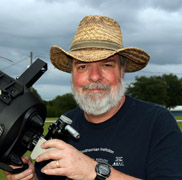
TBS
Biography
“Uncle” Rod Mollise, a Contributing Editor at Sky and Telescope magazine, is familiar to amateur astronomers as the author of numerous books and magazine articles on every aspect of astronomy, amateur and professional. He is most well known, however, for his books on Schmidt Cassegrain Telescopes, SCTs, especially his last one, Choosing and Using a New CAT (Springer), which has become the standard reference for these instruments.
Rod’s previous book, The Urban Astronomer’s Guide is also popular. That’s no surprise, since it is designed to help the majority of amateurs who must observe from light polluted urban and suburban sites actually see deep sky wonders.
In addition to his books, Rod’s work can be found in magazines including Sky and Telescope, Sky and Telescope’s SKYWATCH, Astronomy Technology Today and others. He is no stranger to Internet astronomy, either. Look for him on numerous online forums and on his popular blog, Uncle Rod’s Astro Blog. He is also one of the editors of the acclaimed double star magazine, The Journal of Double Star Observations.
When not practicing astronomy or teaching it to undergraduates at the University of South Alabama, Rod chills out in his new suburban home, which he moved into last year after twenty years downtown and which allows him to finally get out and profitably observe the sky from his very own backyard.
Wayne “Skip” Bird, Outreach Director, Westminster Astronomical Society, Inc.
Sunday, August 16, 2015, 10:00 am in the Yurt
The Heliophysics Educator Ambassador (HEA) program for Informal Educators
Summary
Official: The Heliophysics Educator Ambassador (HEA) program for Informal Educators is a NASA-funded program that will focus on in-depth learning experiences around Earth, Space, and Physical Science topics for educators working with informal audiences and formal K-12 educators. The goal of the IHEA program is to develop the capacity and provide the opportunity for informal educators to train other formal and informal educators on NASA Heliophysics science and educational resources.
Unofficial: Come Join Skip Bird to find out what a Heliophysics Educator Ambassador is, where they work, how you can become one too, and when the world will end (just checking to see if your still reading). I will give a short (OK maybe a little longer than short, OK, OK, a lot longer than short) talk about the HEA program, some samples of activities, and how this program can help our club bring in and keep younger members.
Biography
Wayne “Skip” Bird is presently the Outreach Director/Night Sky Network Guru for the Westminster Astronomical Society, and outreach fanatic (definition of fanatic: someone who will not change his mind AND will not change the subject). He is also a “Mad” Science, Physics and Astronomy teacher for a Homeschool association. He is the world renowned author of “Night Flying Astronomy Bird” articles (OK, maybe world renowned is being a little modest), and the “World’s Greatest Dad”. He has the button to prove it, but enough about me.”
Dr. Harold Geller, George Mason University & NOVAC member
Sunday, August 15, 2015, 1:30 pm in the Yurt
The New Horizons of Pluto
Summary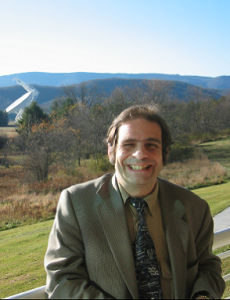
Dwarf planet, planet or whatever, Pluto will yield many mysteries from the New Horizons spacecraft encounter in July. I will present the latest findings from the New Horizons mission as well as giving an overview of the (dwarf) planet Pluto, first discovered by Clyde Tombaugh in 1930.
Biography
Dr. Geller has over thirty years of work experience in industry, government and academia. He first taught astronomy as an adjunct, currently in his ninth year as a full-time faculty in physics and astronomy at George Mason University. He is also now serving as the Associate Chair of the department. He was Principal Investigator on a research grant from the Office of Naval Research (ONR). Dr. Geller also developed multimedia CD-ROM education and public outreach products for ONR.
Chris Todd, Howard Astronomical League
Sunday, August 15, 2015, 3:00 pm in the Yurt
Restoring the Historic Watson Telescope & Its New Home
Summary
Howard Astronomical League (HAL), in partnership with the Howard County, has recently completed construction of an observatory at Alpha Ridge Park, for the express purpose of sharing the wonders of the night sky with the public. The HAL Observatory is the home of the Watson telescope, an antique 12″ f/6 newtonian reflector on a german equatorial mount. Chris will describe HAL’s efforts to restore the Watson telescope and provide it with a permanent home, and talk about how the HAL Observatory at Alpha Ridge Park will form the cornerstone of HAL’s public outreach efforts.
Biography
Chris Todd is a former president of the Howard Astronomical League (HAL). Chris has been an amateur astronomer for over 12 years, has attended all but two AHSPs, and loves sharing views of the wonders of the universe through his 18″ f/4 dobsonian at public star parties. He has earned the Astronomical League’s Master Outreach Award, and has volunteered over 300 hours in support of HAL activities over the last three years.
Dr. Sabrina Stierwalt, Astronomy Research Associate, University of Virginia/NRAO
Sunday, August 16, 2015, 6:30 pm in the Yurt
Invisible Light with ALMA
Summary
ALMA is a radio interferometer high in the Chilean desert. It’s revolutionary design and resulting unprecedented sensitivity are unlocking new areas of astronomy that were previously uncharted. Sabrina will discuss how results from ALMA are changing what we know about galaxy evolution and show some of the impressive engineering feats associated with ALMA’s construction at 5,000 meters above sea level.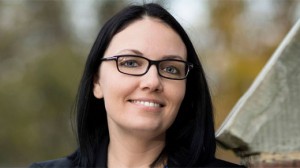
Biography
Dr. Sabrina Stierwalt is an extragalactic astrophysicist at the University of Virginia and the National Radio Astronomy Observatory in Charlottesville. She studies star formation and gas dynamics in nearby colliding galaxies to understand how galaxies form and evolve. She travels all over the world to observe the sky with world-class telescopes in Australia, India, Chile, and even on top of volcanoes in Hawaii. Sabrina also hosts a weekly science podcast via her alter-ego Everyday Einstein with tips for making sense of current science events. Give her a read/listen at www.quickanddirtytips.com/everyday-einstein
Alan Goldberg, The MITRE Corp. & NOVAC member
Monday, August 17, 2015, 10:00 am in the Yurt
The Atmosphere – Astronomer’s Friend or Foe?
Summary
While the atmosphere protects us, oxygenates us, and allows us to speak, it also messes up our observations. This talk will survey the ways in which the atmosphere distorts our view, blocks light from the objects we want to see, and adds light that gets in the way. Understanding these problems may help you avoid them.
Biography
Alan is a member of NOVAC since 2001 and a principal scientist with The MITRE Corp. in McLean, VA. He’s been an amateur astronomer since elementary school, and observes with an 8” SCT. He is fascinated by manipulating and learning from light, tracking it from from its origin to understanding. After graduate study at Univ. of Texas and MIT in astronomy and planetary science, he worked on the design and operation of the Hubble Space Telescope, principally the interferometer star tracker and Guide Star Selection System. He then worked on Landsat, NASA’s Terra-Aqua-Aura series, and NOAA’s NPOESS weather satellites. He currently assists the government in buying satellite remote sensing data and systems.
Wayne “Skip” Bird, Outreach Director, Westminster Astronomical Society, Inc.
Monday, August 17, 2015, 1:30 pm in the tent
Phun with Physics (Translation- Really Weird Science)
Summary
Thought you knew everything? You’re right you do. Now come and find out ways to use and abuse that info. Join us for really strange examples of Physics gone wrong. We’ll shrink wrap a couple of volunteers just before we mummify them. Find out how the Flaming Wheel of Death works. Explore why your brain is trying to trick you ALL the time or “What you see is not what is there”, when a wall of squares turns into a frog or was that a horse, no it was a horse frog, no, no it was 2 frogs, or was it 2 horses, AAAHHHHHHH. Broke my brain again. “Then all the kids brains were changed and they ascended to a higher plane of being” (I wonder how long it will be before the parents notice) and more. I told you this was WEIRD SCIENCE.
Biography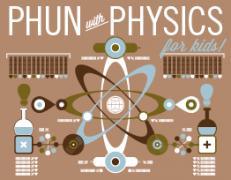
Wayne “Skip” Bird is presently the Outreach Director/Night Sky Network Guru for the Westminster Astronomical Society, and outreach fanatic (definition of fanatic: someone who will not change his mind AND will not change the subject). He is also a “Mad” Science, Physics and Astronomy teacher for a Homeschool association. He is the world renowned author of “Night Flying Astronomy Bird” articles (OK, maybe world renowned is being a little modest), and the “World’s Greatest Dad”. He has the button to prove it, but enough about me.”
John Sojka, Jr., NOVAC member
Monday, August 17, 2015, 1:30 pm in the Yurt
Astrophotography Workshop 1 — Astrophotography 101
Summary
This session is an introduction in to the marvelous world of astrophotography! Astrophotography is a specialized type of photography for imaging astronomical objects and large areas of the night sky using an amateur telescope, mount, and readily available cameras. This session will lay out the bare essentials to get started and end with what is necessary to produce high quality, professional astro-images. This session will also cover the tangibles (hardware, software, books, cameras and settings, etc…) and intangibles (mentors, time and patience, trial and error, etc…)
Biography
Mr. Sojka is a Department of Defense professional working in realm of space and sensors. Although an amateur astronomer, Mr. Sojka has had the privilege of using his astronomy and astrophotography skills professionally. Mr. Sojka’s astrophotography journey started in 2010 with his involvement in the NASA LCROSS Mission. He found himself in the unique position of being the only astronomer within his organization; therefore, he was tasked with imaging the plume on the moon generated by the LCROSS impactor. Mr. Sojka’s passion for astronomy started with his father when he was a boy. His father was instrumental in building several observatories and reflector telescopes. Mr. Sojka still uses his father’s home-made 10″ reflector telescope to this day.
Jan Wisniewski, NOVAC member
Monday, August 15, 2015, 3:30 pm in the Yurt
Astrophotography Workshop 3 — Advanced AP techniques
Summary
Jan will complete the workshop with his discussion of some advanced astrophotography techniques. Details will be provided.
Biography
Dr. Jan Wisniewski’s is a member of Royal Astronomical Society of Canada and the Northern Virginia Astronomy Club (NOVAC). Jan’s fascination with the night sky dates to seeing the explosion of Nova Cygni 1975 from his native Poland. Since then he has enjoyed visual astronomy and astroimaging, including building his own Cookbook CCD cameras and a 20 inch f/4 Dobsonian telescope.
When not observing he tries to stay close to the hobby. He has developed new types of optical microscopes and other tools and uses them to probe secrets of genes and individual molecules inside living cells at Howard Hughes Medical Institute in Ashburn, VA.
Dr. Geneviève de Messières, Smithsonian National Air and Space Museum
Monday, August 17, 2015, 6:30 pm in the Yurt
Also, demonstration preview Sunday 11:00 AM [tent.]
Alien Worlds
Summary
See a live demonstration of how telescopes like Kepler find planets around distant stars. Get an update on the most recent exciting news about exoplanets.
Biography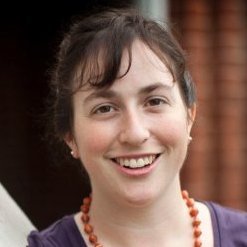
Geneviève de Messières got her PhD in astronomy from the University of Virginia. She is an astronomy educator at the National Air and Space Museum, where she works with the Phoebe Waterman Haas Public Observatory, hands-on activities, lectures, and the Albert Einstein Planetarium.
2014 Events Archive Page – 2013 Events Archive Page
Participatory Activities
Swap Table
Friday, August 14, 2015, 4:00-5:30 pm on the Yurt deck
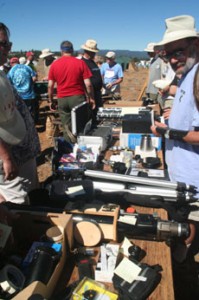
Bring your astronomy, observing, or space-related items to sell. Bring your cash to get those items you need. Bring more cash for the items you want. Bring even more to get items you didn’t even know exist.
All transactions will be simply private between buyers and sellers. Sellers should stay with their items as long as they are on display.
Back Ridge Observatory Open House
Saturday & Sunday, 3:00 pm at the observatory, or meet 2:45 pm on the deck.
Host is Joe Morris
Joe will open the observatory he has made available for TMI’s use, on the ridge northwest of the observing fields.
Solar Observing
Saturday & Sunday, 3:00-4:30 pm on the Yurt deck.
Bring your solar telescope or filtered astronomical telescope to the deck to share views of the Sun.
Hands-on Introduction to Celestial Navigation
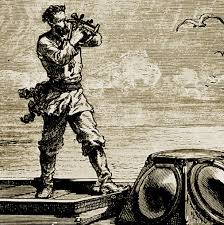
Saturday & Sunday, 3:00-4:30 pm on the Yurt deck.
Alan Goldberg
Learn the basics of celestial navigation using the Sun and a sextant. Use the mariner’s sextant yourself — also a bubble sextant used in aircraft, if available.
Hands-on meteorites
Saturday, 4:30-5:30 pm in the main Yurt.
Geneviève de Messières, National Air and Space Museum
Dr. de Messières will explain a selection of meteorites from the Smithsonian collections.
Telescope Alignment Workshop
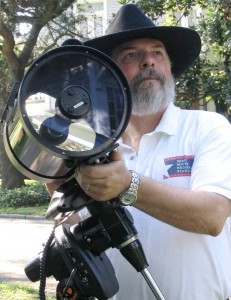
Evening, Friday or Saturday [day and location to be announced].
Rod Mollise
Uncle Rod will explain how to align your telescope efficiently and reliably.
Informal Visual Observing Workshop
Evenings, Saturday through Monday. Meet on the Yellow Observing Field (look for the red marker light).
Name of presenter to come
Presenter will be available every night at dusk to chat with beginners on a variety of observing topics. This informal get-together could cover anything from how to locate and recognize deep sky objects, types of objects to observe, tips on seeing faint objects, etc. Beginners questions will steer the topics discussed. Drop by for a short while or stay until the chat winds up for the evening. This is informal! Appropriate for observers of all experience levels.
Telescope Walkabout
Saturday, August 15, 2015, 3:30-5:30 pm in the fields
Bob Bunge, NOVAC member
Bob Bunge will lead a tour of examples of typical and unique telescopes and their accessories. This tour is appropriate for beginners who would like to see examples of telescopes they might buy or build, and for more advanced observers who are interested in the latest and greatest.
If you would like your telescope to be a stop on the tour, just leave it uncovered or join the tour. If you are not present, Bob will describe the main attributes of your scope. You might also contact Bob in advance bbunge@ladyandtramp.com to let him know what you have to show, and in which field you will be.
The Walkabout will meet at the entrance to the Red Field, on the south side of the road toward the yurts from the registration tent.
Alien Worlds — exoplanet occultation demonstration
Sunday, August 16, 2015, 11:00 am in the overflow tent beyond the deck [tentative]
also talk Monday at 6:30 pm
Dr. Geneviève de Messières, Smithsonian National Air and Space Museum
See a live demonstration of how telescopes like Kepler find planets around distant stars. Get an update on the most recent exciting news about exoplanets. This is a preview of the talk to be given Monday evening.
Astronomy Jeopardy game
[TBA] Saturday, Sunday or Monday, 8:00 pm in the Yurtcloudy night activity
Dr. Cathy S. Bunge, Northern Virginia Community College & NOVAC member
The game is played using a nifty PowerPoint slide show. We will pre-select three NOVAC/star party leaders who will then each recruit three other party goers to be on their teams. This means there will be three teams of four people. Prizes would be in the form of Milky Way bars or the like.
Dr. Bunge is an Adjunct Faculty member for the Northern Virginia Community College (NOVA) where she teaches Astronomy in the classroom and online. Prior to joining NOVA, she was a systems engineer at NASA Goddard where she worked on the Flight Operations Team for the Small Explorer satellite program and as a Resident Astronomer on the International Ultraviolet Explorer (IUE) satellite. Dr. Bunge has a Ph.D. in Astronomy from The Ohio State University (1990).
Outdoor Events – Adjustments to events may still happen
Summit Hike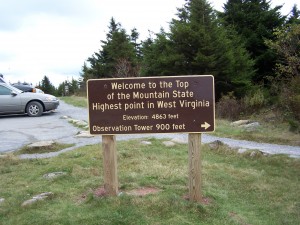
Sunday, August 16, 2015 at 9:00 am – 12:00 n
The Mountain Institute Staff
The Mountain Institute’s staff will lead a hike to the observation tower at Spruce Knob summit. Wear sturdy closed-toe shoes, and layered clothing that can be removed as you get hot. Depart from the Yurt deck at 9:00 on Sunday
Birdwatching
Saturday & Sunday, August 15 & 16, 2015 at 9:00 am – 11:00 am
Ian Carmack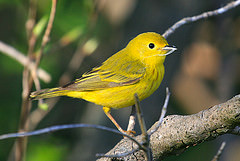
Whether you are a seasoned birdwatcher or a casual observer you are sure to enjoy one of our two birdwatching sessions. Don’t miss this opportunity to see what West Virginia has to offer this time around.
Birdwatching sessions will occur Saturday and Sunday morning right after breakfast, weather permitting.
Bring binoculars if you have them. We will be walking through some uncut grass, so shoes (boots) that can withstand some dew may be a good idea.
Geology Hike
Saturday, August 15 2015 at 10:00 am – 12:00 n
Lyle Mars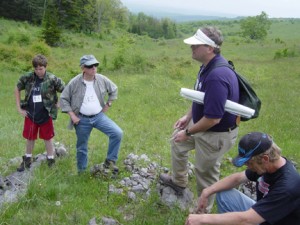
This is a fascinating description of the mountain we’re on followed by a hike for those interested in learning more about the geology of the Spruce Knob region. No prior knowledge of geology needed.
Caving … is back!
Sunday, August 16, 2015 at 1:30 pm – 3:30 pm
The Mountain Institute Staff
The Mountain Institute’s staff will lead a trip to a local Shenandoah cave. After many years of caves being closed for fear of spreading White Nose Syndrome in bats, it has been determined that caving is not a contributing factor. TMI staff will lead a caving trip on Saturday. Prepare to get muddy!
Prizes!
AHSP Raffle
AHSP will be having its raffle again this year.
- There will be one special item, limited to one entry per AHSP registrant.
- Attendees will receive several regular raffle tickets with registration, and can buy more.
- Extra tickets will be given to children who are attending, and which can be used exclusively to enter for items appropriate to their ages.
- The raffle drawing will be Sunday before dinner.
[Details subject to adjustment.]
In brief:
- Each adult registrant will be given blue tickets, which can be used for the special raffle item, or general items.
- Each child registrant will be given yellow tickets, which can be used for children’s items, or general items.
- Each registrant will be given red tickets, and can buy more red tickets, which can be used to enter for general items.
All events, times and dates are subject to change based on sky conditions and other factors.
AHSP Photos – Shoot and Show!
Instead of a photo contest, we will have a photo gallery for everyone’s enjoyment in the main Yurt. Once processed, bring your photos in a memory card or USB-cabled device to the Yurt, where you can load them yourself on the designated machine. These can be sky photos, nature photos, or photos of activities of AHSP.
